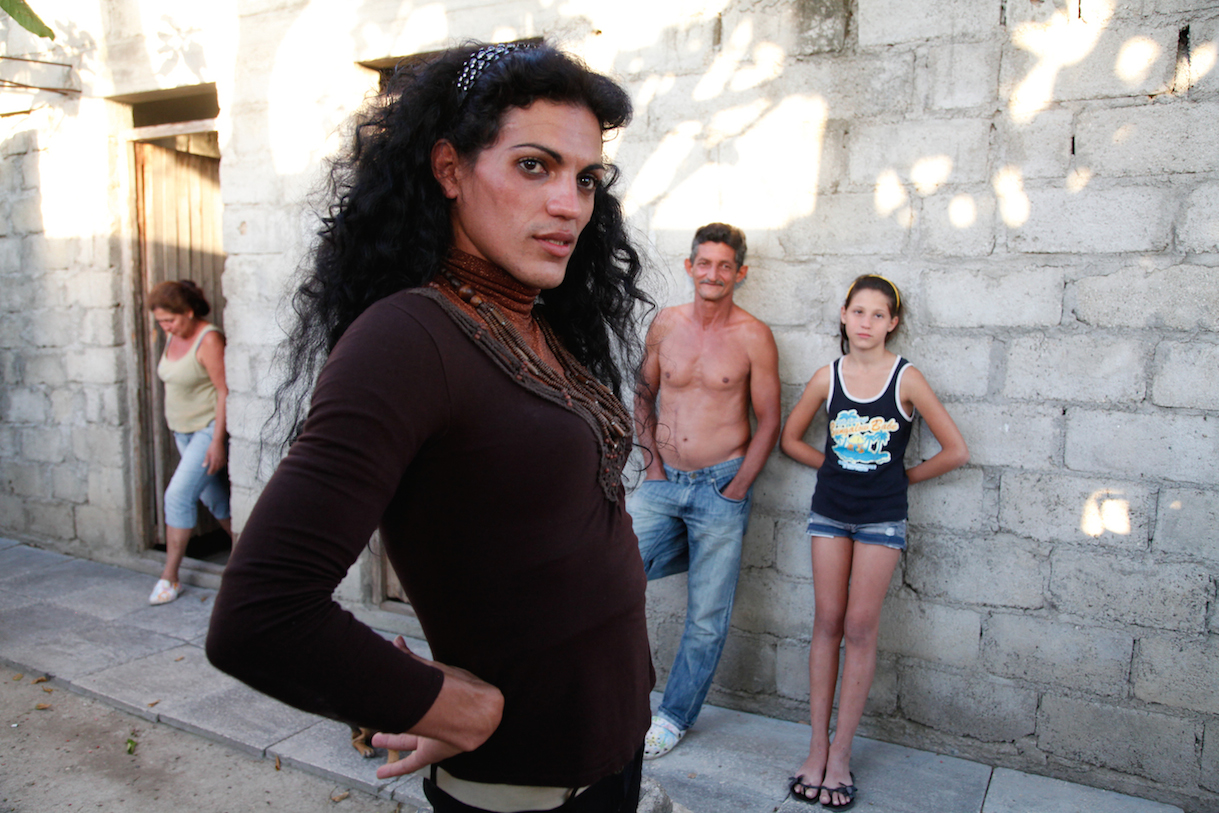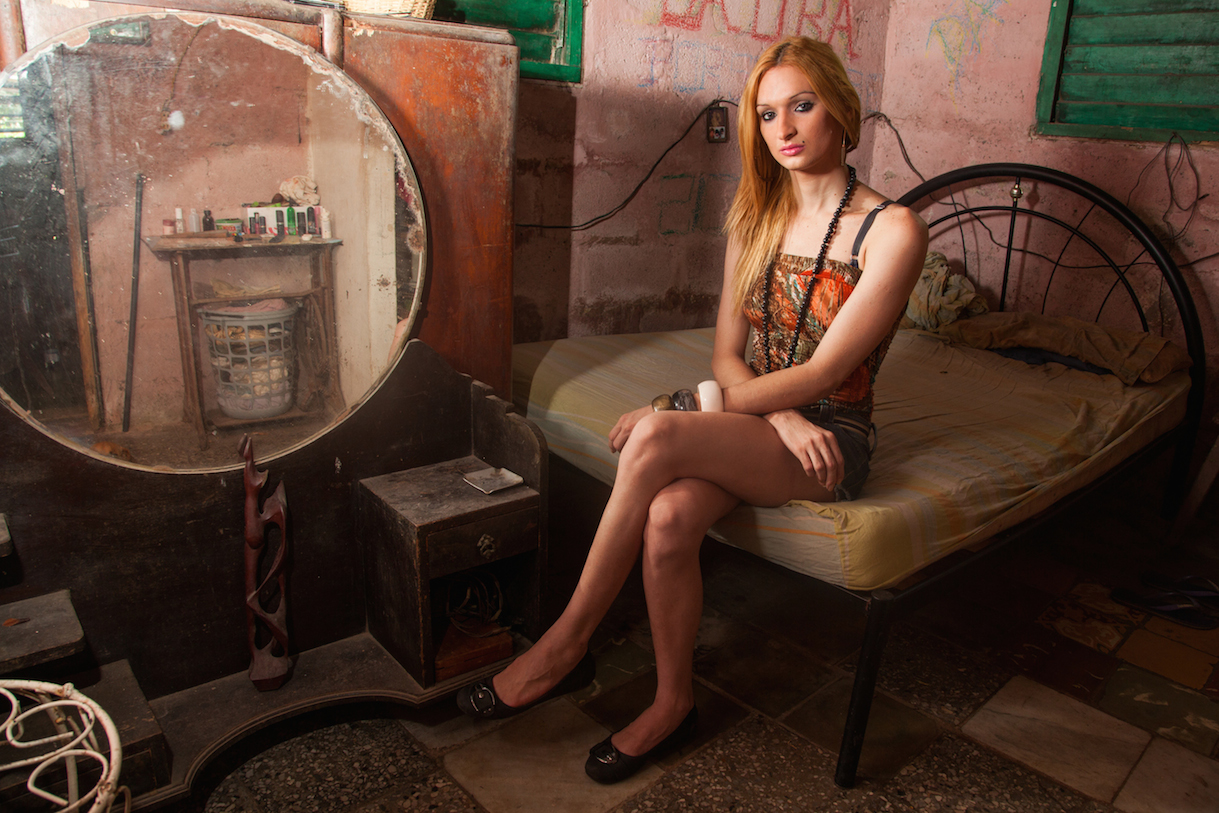The empathic eye of Mariette Pathy Allen in her new book TransCuba

This post inaugurates a new occasional series we are launching called Spotlight on my students. The inspiration for doing this series came after Harold’s December 2012 book signing at Aperture Gallery. At that event over two-thirds of the people who attended turned out to be his former students and he was inspired to celebrate his teaching career by showcasing the work of his students. Each post will be edited by Judith and will include a gallery of images chosen by the photographer, together with commentary from both Harold and the artist.
Our first photographer in this series is Mariette Pathy Allen, who studied with Harold in 1965 when he was teaching at the Philadelphia Museum College of Art. She continued to take his workshops over the years. According to Mariette, “Harold liberated me to let go of all inhibitions and follow my inclinations. It was exciting and a passport to the world.”
Her latest book, TransCuba (Daylight Books, 2014) is an exquisite photo essay focused on the transgender community in Cuba, and particularly a group of women with whom she formed close and trusting relationships. This is her third book focusing on her engagement with the transgender community, which she began in 1978.
This book came about as a result of the 2012 Fotofest. At that time ten portfolio reviewers chose one photographer whose work had most affected them. Those ten photographers then have ten photographs exhibited at the following Fotofest (2014 Fotofest happening now) and the exhibition is called Discoveries of the Meeting Place.
Mariette’s work was selected by the Michael Itkoff, co-founder of Daylight Books, who later offered to publish the work in book form. The book includes 80 color photographs, an introduction by Allen Frame, an essay by Wendy Watriss (co-founder of Fotofest and also a former student of Harold’s), and a preface by Mariela Castro Espin, the daughter of Raul Castro and an advocate for the LGBT community in Cuba. Mariette’s essay below provides the context for the photographs you see in this blog as well as her deeper understanding of the significance of the work.
PERSONAL ESSAY FOR TRANSCUBA
For the past 35 years, I have been involved with “the transgender community” as a photographer, writer, advocate, ally, and friend. My focus remains the same as when I started: the de-freakification of gender variant people. Just in the process of living their lives, people who are gender nonconforming make profound questions visible: What is the relationship between body and mind? What does “man” or “woman” mean? Finally, what is the essence of a human being?

Although most of my work has been done in the United States, I have been active in other countries as well, and in January, 2012, took my first trip to Cuba. I participated in a conference with members of “The World Professional Association for Transgender Health” who were invited to Cuba by Mariela Castro through Cenesex, an educational organization that provides medical and psychological services to transgender and homosexual people. It’s headquartered in a beautiful old building in a quiet neighborhood in Havana, where it serves as a gathering place for this community.
As part of the conference, we were invited to spend an evening at the Las Vegas Club, one of Havana’s liveliest drag performance venues. Within the club’s fanciful décor, female impersonators in spectacular outfits poured their hearts out as they lip-synched to tragic, romantic music. Enthusiastic groups of gender non-conforming women, looking stylish and original, cheered them on and mingled with the rest of the audience. I was eager to meet the women, and was immediately drawn to Amanda by her obvious charm and her less polished appearance, which made me feel that she might be easier to get to know. We had an instant connection, and she held my hand as we walked to the bar. Then, through another photographer, I met Nomi, who was brimming with energy and good will. I was very impressed to discover that she had taught herself to speak English.

I ended up spending most of the next week in the company of Amanda and Nomi. We walked miles around the city, over Havana’s dramatically uneven streets, visiting places and people they knew, or standing in long lines waiting to change money or to charge their cell phones. On my last night in Havana, as we were walking to my hotel, we were stopped by a policeman. He asked Nomi and Amanda for their identity cards, and wrote the information in a book. They accepted the situation with dignity. “We’re used to it. He probably thinks it’s strange that we’re here with you,” Nomi explained.
I met Malu on another night at the Las Vegas Club, but I didn’t get to know her until my next visit, in February 2013, because Amanda had become her roommate. Malu is a natural leader; organized, determined, and generous. As “the best known transgender person in Cuba”, she introduced me to most of the people I met on my next three visits.

As Cuba transitions from strict communism to a more inclusive socialism, private enterprise is gradually becoming acceptable, and outside influences are palpable. Sexual minorities in this macho-inclined country are becoming more visible and less despised. Gone are the work camps where individuals of “corrupt morals” were sent to provide free labor to the Revolution. Many of these workers were homosexual or transgender. It was a time before the term “transgender” was understood, much less accepted as part of the language.

It seems to me that the changes being made by the Cuban government are most obvious when we look at the people who, by their nature, need to transition from their birth gender. I see transgender Cubans as a metaphor for Cuba itself; people living between genders in a country moving between doctrines. As restrictions decrease, discrimination against people who are gender nonconformists is becoming less prevalent. A lot of credit for making their lives easier belongs to Raul Castro’s daughter Mariela, a sexologist. She is making her own revolution by revitalizing Cenesex, creating anti-discrimination campaigns and celebrations, working to improve legal, psychological, and medical treatment including gender reassignment surgery, and fostering closer connections between sexual minorities in Havana and around the country.

Malu, Amanda, and I traveled around Cuba together. We visited their families and friends, including the only person they knew who transitioned from female to male. We went to the beach, to performances and other special events. One night in Camaguey we checked out a cruising area in a beautiful public park replete with stone sculptures and a monument. We spent a few evenings at Havana’s Malecon in the area where men go to look for gay boys or trans women, and we spent four days participating in the annual celebration of “The week Against Homophobia and Transphobia”.
Malu organized visits with many remarkable people who were open to sharing their lives with me. I found that the further we traveled from Havana, the more prejudice the women had encountered, and in many cases their poverty level was alarming. When someone transitions from living as a man to living as a woman, work opportunities dwindle and prostitution becomes one of the only ways to survive.

Although all the women I met are highly individual, they all seemed to want the same thing romantically: a cute teenage boyfriend whom they referred to as their “husbands.” On the other hand, if the transgender woman was very young, she wanted a much older man. I hardly found anyone who wanted to be involved with someone her own age, and I never met anyone who was attracted to women or other transgender women. When I asked the women why they wanted these young boys, most said, “They’re so beautiful!” To me, this romantic tradition is one more variation along the gender identity and sexual orientation continuums, and I love the blurring of sex and gender stereotypes.

The people who comprise what we understand as transgender have always existed, but the understanding of who they are and how they can participate in society is new. As the Cuban population as a whole gains greater personal freedom, it will hopefully continue to be reflected in the treatment of sexual minorities.
I can envision a future time when mainstream society will be so free of judgment and prejudice that gender variant people will be appreciated as teachers who show the rest of us how to liberate ourselves from the rigidity of gender roles and find alternative ways of integrating mind and body. For now, though, I just want to celebrate the inherent beauty, artistry, and humor of the Cubans I was so fortunate to meet.
Harold’s Commentary:
I’m so deeply moved by Mariette’s work. Her vision is so tender and her dedication to the subject matter is heroic. When I think about photography truly making a difference in the world — in impacting peoples’ attitudes and helping to transform social injustices, I often think about my old friend W. Eugene Smith. Mariette falls in to the same rare circle of people with that ability. As I look at these images, I feel invited into the intimacy and warmth of these moments. The gentleness of Laura sitting on her bed or the confidence of Malu standing strong outside her home — all these portraits of people who could be our neighbors and indeed are our neighbors. Finally, it is her empathy that I’m left with. Her extraordinary way of opening us all to a world where hope, love, beauty and sorrow link all of us as human beings. Without this empathy she couldn’t reveal the essence of humanity in the way that she does. All I can say is “thank you”.
PREVIOUS

All you need is love: Belated Valentine’s Day to my friends
Thank you so much Judith and Harold. I hope you are well, Harold, as you are in my thoughts on a very regular basis. And Judith, I am so impressed with this piece, its depth and its beauty too. I know first hand how much work theses posts are and yours is really wonderful.
w/thanks,
Neal
Thanks Neal. Nice to hear from you and know that Harold is in your thoughts. I appreciate your comments. Mariette’s work is wonderful so it was a joy to take the time to put this together! Best to you
Morning Harold and Judith: What a powerful piece! As Harold writes, “…her dedication to the subject matter is heroic.” I wish I had been one of Harold’s pupils—I have learned so much from his writings on photography and the essence of humanity. I hope to see you both very soon….
with much love you remain in my prayers….
Your work is unique, however, stories fun much deeper than this. There is always a story behind the eyes of a photo shoot.